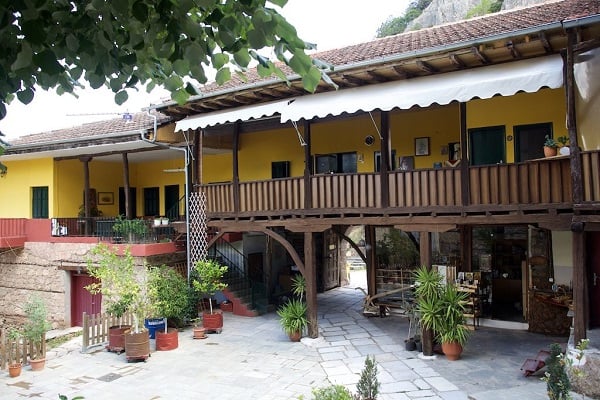The Orthodox Monasteries as guards of a great cultural heritage
17 February 2017[Previous post: http://bit.ly/2l3qW1X]
Besides, the repair of traditional and historical buildings as well as the conservation of cultural heirlooms is a very costly business. For many members of the Church it may be a luxury which ought to be of more interest to the archaeological services and less to the Christian engaged in the spiritual struggle. But the value of Christian cultural wealth can’t be assessed as measurable material; rather, it must be seen as something which has radiated the life and spirit of the Church throughout its history. People of the Church, of every social and economic level, have often expressed their relationship with God through art. Art of all kinds. The Church accepted this from very early on and gave it the status of dogma at the Seventh Ecumenical Synod. The Creator of matter is God, and people as functionaries and co-creators re-shape matter and offer it back to God in thanks. This action produces Orthodox Church culture and boasts sublime examples of music, poetry, painting, sculpture and every kind of art. This is the moral and theological reasoning behind our Church’s justification of its care and conservation of cultural features. And there’s something else here, too.

Through its monuments, a culture gains world-wide recognition. It becomes a language of communication with people outside it, who may be strangers to the ascetic spirit and monastic ideals of Orthodoxy. And so the monuments and treasures become means of attracting and interesting people from all over the world and, in this sense, are, in fact, a world heritage. In a way, they undertake a role which is at once missionary and unifying. Without imposing any obligations, they give people the opportunity to seek and find what’s concealed behind such a rich heritage. More than one person has set out to visit a monastery because of an interest in inanimate treasures and have found themselves on a profound personal quest through the help of the animate bearers of Orthodox spirituality. This is also how we can interpret the interest of global agencies such as UNESCO or the European Union in the preservation and protection of monastic ecclesiastical monuments and treasures, especially those of the Holy Mountain, even to the extent of financial support.
To the concern engendered by all the above, and in the interests of preserving the ascetic and hesychast spirit, coenobitic monasticism has provided the answer and solution of holding property in common. Common property is presented as the way of life of the Early Church in Jerusalem and many Fathers persistently highlight it as the ideal way of life. From Basil the Great and Saint John Chrysostom down to Symeon the New Theologian and those who followed him, we come across the view that God gave the most important things in life, such as the air we breathe, light, water and other things, freely for the use of all in common, without anyone having power over them, and so that rich and poor alike could enjoy them in the same way. Property has greed as its source and selfish use of it is condemned as a sin . According to Professor George Mantzaridis: “common ownership of property makes tangible, on the level of the personal and social life of the faithful, the aim of the divine incarnation and the truth of the Trinitarian dogma” . In other words, it’s the moral expression of the fundamental, dogmatic teaching of the Church.






